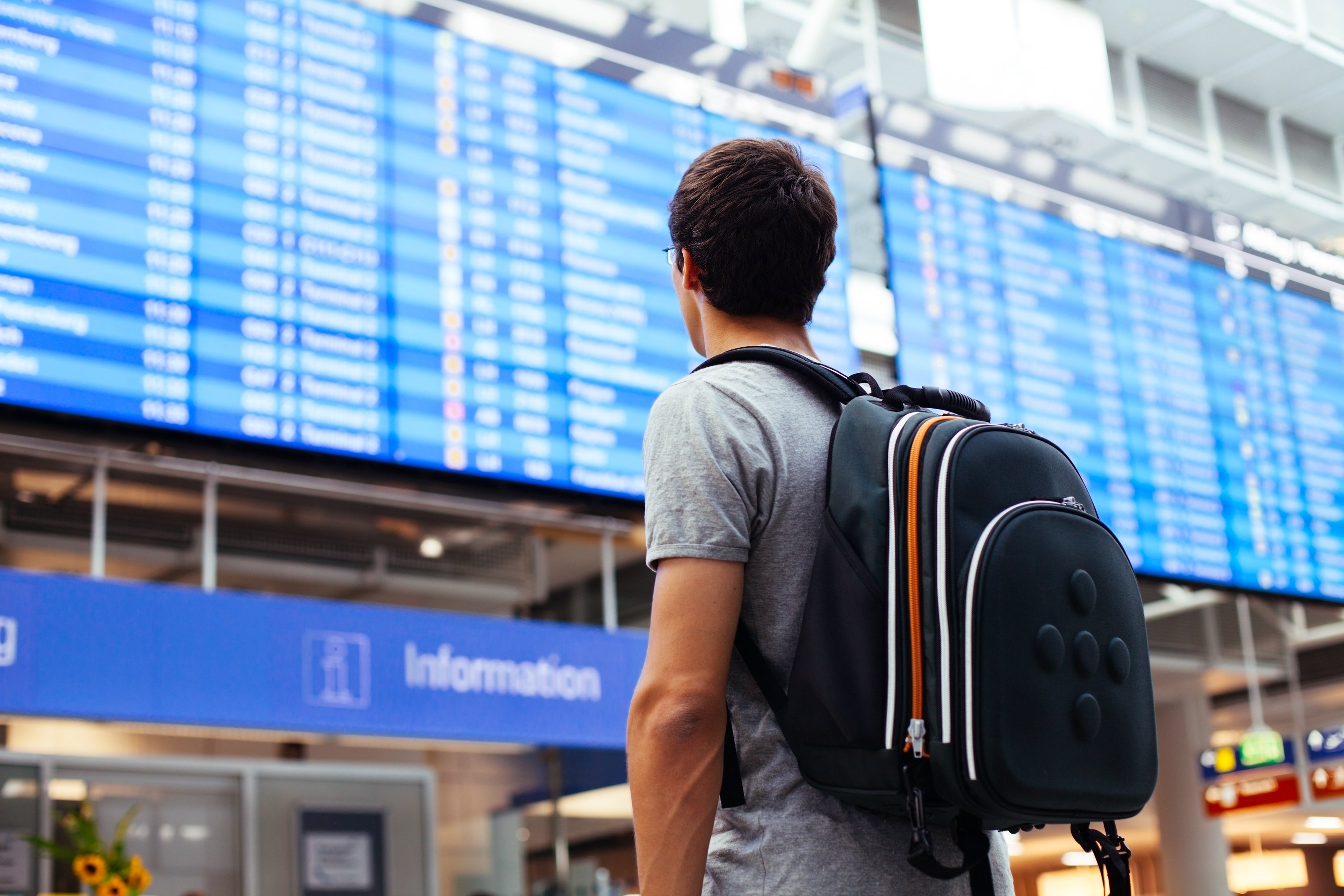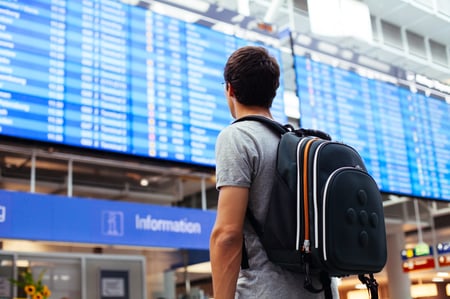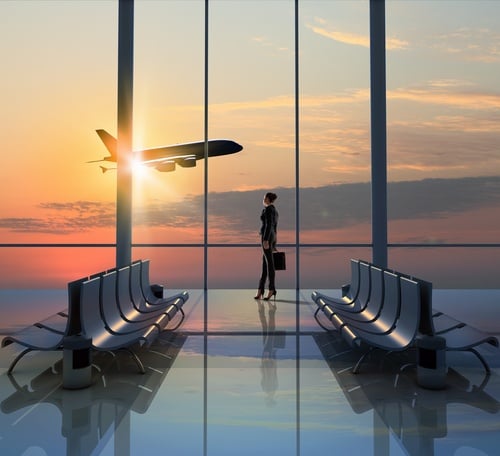The 2016 Travel Industry By the Numbers
By Nick Ostdick on Jan 24, 2017 10:58:31 AM

In a recent entry, we recounted 2016 by looking at some of the biggest trends and storylines of the last  year in order to get a glimpse of where the travel industry may be headed in the next 12 months. While many of these narratives are compelling in that they paint a portrait of a complex global industry poised for continued growth, they fail in some sense to show just how impactful 2016 was in terms of hard figures. To put it bluntly, numbers matter and numbers don’t lie, especially in today’s travel landscape where travel companies must work harder than ever before to remain competitive and viable.
year in order to get a glimpse of where the travel industry may be headed in the next 12 months. While many of these narratives are compelling in that they paint a portrait of a complex global industry poised for continued growth, they fail in some sense to show just how impactful 2016 was in terms of hard figures. To put it bluntly, numbers matter and numbers don’t lie, especially in today’s travel landscape where travel companies must work harder than ever before to remain competitive and viable.
Whether you’re discussing the total number of dollars spent globally on inbound travel or the percentage of millennial travelers entering the market for the first time, 2016 presents some fascinating statistics that travel companies and tour operators should pay close attention to as they ramp up for the coming year. Because so much of the travel industry relies on actionable data, these year-end figures and projections perhaps reveal more of the story of 2016 than the trends and stories themselves.
So as we move forward in 2017, let’s take a moment to look back at 2016 at 10 of the most interesting and arresting statistics in hopes of discovering what made 2016 such an important year for the travel industry, but also to uncover what may be in store in the months to come.
1). It’s projected that the travel industry will generate roughly $1.2 billion globally on inbound travel during 2016, a figure that represents a healthy increase from the year prior. Much of this growth can be attributed to new and emerging markets like those in Europe and Asia, but it’s also a testament to the growing majority of younger travelers entering the market for the first time with a desire to travel and experience new and exciting destinations.
2). Travel product sales are expected to top $2.1 trillion on a global scale in 2016 with a projection of more than $2.5 trillion by 2020. This continued growth is driven in large part by the emergence and development of new technology like mobile apps, messaging, and other online travel platforms, but also by a new and diversifying business model that includes these new technologies as critical parts of the travel industry’s sales platform.
3). Domestic trips are projected to top nine billion in 2016. This represents roughly a 6 percent growth in domestic travel as today’s traveler is becoming more interested in exploring their native region, but can also find more value in terms of dollars and cents when it comes to planning and booking shorter, closer to home trips.
4). We know 2016 was a crucial year for mobile technology and the numbers support that narrative. Global mobile sales this past year are expected to top more than $250 billion with other online-based sales nearing that benchmark as well. For travel companies and tour operators, this should drive home the notion that not only is mobile not going away, but it’s becoming a necessity in terms of how travel companies manage their back-office tasks, work with suppliers, and communicate and interact with customers.
5). The United States and Asia were deadlocked in terms of inbound trips with more than 60 million visits in 2016, the largest number of inbound trips compared to all other regions of the world. While the U.S. has long held a strong foothold in the number of annual inbound trips, the emergence of the Asian market should prove interesting in 2017 and beyond as travel companies work to attract new customer bases and source attractive products and services in that region.
6). 69 percent of travelers indicated the desire to try something new or experience a previously unvisited destination in 2016. The significance of this statistic relies on the idea that today’s traveler, unlike previous generations, is more interested in what’s new and what’s next rather than simply revisiting the same family vacation destination year after year.
7). 33 percent of travelers in 2016 indicated the desire to spend more on travel than in the previous year. What’s interesting about this figure is that those polled also indicated they plan to spend more on travel regardless of increases or price fluctuations, which means much of the world’s population is putting a greater emphasis on experiencing as much of the globe as possible.
8). Much has been about the way travel companies do business in 2016 and beyond - the need to streamline, integrate new technologies, and move away from manual methods of reporting, tracking, and processing. Yet even so, about 80 percent of travel companies still relied on traditional business or operational models in 2016 in some capacity, whether it was back-office, customer-facing, or supplier relations.
9). Mobile. Mobile. Mobile. The travel industry was buzzing about the continued growth of mobile technology in 2016, and while some might have tired of this storyline, roughly 85 percent of internationally travelers reported carrying a mobile device with them 24/7 during a trip in 2016. This means today’s traveler is constantly connected, looking to connect with others, and aware of how quickly and significantly travel plans can shift in terms of delays, cancellations, inaccurate bookings, and more.
10). Millennials have emerged as a powerful market force in today’s travel industry, and 2016 showed little sign of that trend coming to an end. Six out of ten millennials indicated the desire to spend money on experiences rather than material goods in 2016, which put travel companies in advantageous position to offer unique, personalized, once-in-a-lifetime experiences to customers who seek to explore rather than purchase.
- travel technology (58)
- Travel Industry (49)
- travel agency (31)
- travel erp (31)
- travel trends (28)
- travel booking system (23)
- TINA (21)
- travel company (19)
- Tour Operator (18)
- Product updates (17)
- Travel Management Company (17)
- AIDA (15)
- TBS (15)
- dcs plus news (14)
- tour operator solution (14)
- travel website (14)
- travel erp system (13)
- Business Travel (12)
- Mobile App (12)
- Travel App (12)
- mid back office solution (12)
- trends (12)
- Industry Events (11)
- Mobile Technology (11)
- TMC (11)
- travel agents (11)
- erp (10)
- erp system (10)
- Corporate Travel (9)
- Tour Operators (9)
- Travel booking engines (9)
- dcs plus (9)
- online travel agency (9)
- travel agent (9)
- Mobile Bookings (8)
- travel (8)
- travel agencies (8)
- 2017 (7)
- Mobile Travel (7)
- travel business (7)
- travel software (7)
- Digital Technology (6)
- Insider (6)
- Millennials (6)
- Online booking systems (6)
- Travel Management Companies (6)
- process automation (6)
- travel companies (6)
- Big Data (5)
- Business Traveler (5)
- Partners interviews (5)
- Tour Operator Software (5)
- customer retention (5)
- travel agency technology (5)
- Booking engines (4)
- CSBT (4)
- Mobile Device (4)
- OTAs (4)
- Static databases (4)
- Tour Companies (4)
- Travel Policy (4)
- Travel booking systems (4)
- Travel suppliers (4)
- back office automation (4)
- millennial travelers (4)
- online travel (4)
- responsive travel website (4)
- technology (4)
- travel website conversion (4)
- 2016 (3)
- Content mapping (3)
- Databases (3)
- Demographics (3)
- Food and Adventure Tourism (3)
- Mobile Apps (3)
- Mobile travel apps (3)
- Travel Distribution Channels (3)
- Travel Management Software (3)
- Travel customers (3)
- Travel history (3)
- anniversary (3)
- automated processes (3)
- content matching (3)
- global travel industry (3)
- social media (3)
- travel agency workflow (3)
- travel back office (3)
- travel marketing (3)
- travel process automation (3)
- Advanced Booking Systems (2)
- B2B Travel Resellers (2)
- Bleisure (2)
- Branding (2)
- Business Process Automation (2)
- Business Travelers (2)
- Customer engagement (2)
- Financial Reporting (2)
- Food Tourism (2)
- Inbound Marketing (2)
- Infographic (2)
- Leisure Travel (2)
- Saas (2)
- Templates (2)
- Travel Costs (2)
- Travel bookings (2)
- Travel start-up (2)
- Travel website abandonment (2)
- WTM 2016 (2)
- abandoned travel bookings (2)
- corporate self booking tool (2)
- engagement marketing (2)
- internet booking engine (2)
- millennial traveler (2)
- new travel company (2)
- office (2)
- online reputation management (2)
- online travel reviews (2)
- reporting (2)
- software (2)
- start-up tips (2)
- travel agency management (2)
- travel agency website (2)
- travel experience (2)
- travel mobile app (2)
- travel packages (2)
- travel reservation system (2)
- travel system (2)
- travelers (2)
- web-based travel erp (2)
- 2020 (1)
- 360 Customer View (1)
- Advanced Accommodation Contract Management (1)
- Adventure travelers (1)
- Apps (1)
- B2B Reseller (1)
- B2B Resellers (1)
- B2C (1)
- BI Reporting (1)
- Budget traveler (1)
- Cancellations (1)
- Chat (1)
- Chinese millennial (1)
- Cloud (1)
- Cognitive computing (1)
- Comparison shopping (1)
- Conference (1)
- Contact matching (1)
- Content (1)
- Cruise (1)
- Culinary traveler (1)
- Customer relations (1)
- Digital Innovation (1)
- Digital Natives (1)
- Documents (1)
- Emerging market travelers (1)
- Emerging markets (1)
- Errors (1)
- Experimental travel (1)
- Financial Dashboard (1)
- Import rates (1)
- Instant messaging (1)
- Integrate with Accounting Software (1)
- Internet (1)
- Luxury traveler (1)
- Mobile Transaction (1)
- Mobile payments (1)
- NDC distribution (1)
- Operational Reporting (1)
- Reseller networks (1)
- Resellers (1)
- Response (1)
- Subagents Network (1)
- TINA Academy (1)
- TTE (1)
- Travel Reseller Network (1)
- Travel Revenue Management (1)
- Travel booking problems (1)
- Travel finance reporting (1)
- Travel stats (1)
- WTM (1)
- abandonment (1)
- accomodations (1)
- advanced reporting (1)
- airline direct connect technology (1)
- ancillary services (1)
- cloud computing (1)
- collection (1)
- collection challenges (1)
- common data model (1)
- conversion rates (1)
- cost control (1)
- credo ventures capital invests in dcs plus (1)
- customer reviews (1)
- data analysis (1)
- dcs plus credo investment (1)
- dcs plus credo ventures (1)
- deloitte technology fast 500 EMEA (1)
- digital transformation (1)
- e-invoicing KSA (1)
- email marketing (1)
- email marketing for OTAs (1)
- erp e-invoicing (1)
- lost travel bookings (1)
- modern travel agencies (1)
- networks (1)
- new features (1)
- offers (1)
- online customer review (1)
- online reputation (1)
- online travel agencies (1)
- risk management (1)
- sales (1)
- senior travelers (1)
- shopping baskets (1)
- shopping carts (1)
- social network (1)
- standardized processes (1)
- static content (1)
- travel SaaS (1)
- travel account services (1)
- travel agency customers (1)
- travel agency profitability (1)
- travel analytics (1)
- travel blog (1)
- travel planning (1)
- travel reviews (1)
- travel shopping carts (1)
- travel software for agencies (1)
- travel software system (1)
- travel technology europe (1)
- travlist smart mobile app (1)
- trend (1)
- trusted adviser (1)
- trusted advisor (1)
- upsell functionality (1)
- vouchers (1)
- website traffic (1)
- zatca (1)
Subscribe by email
You May Also Like
These Related Stories

The State of Mobile Travel Bookings in 2020

Looking Ahead: Travel Trends to Watch in 2017


No Comments Yet
Let us know what you think